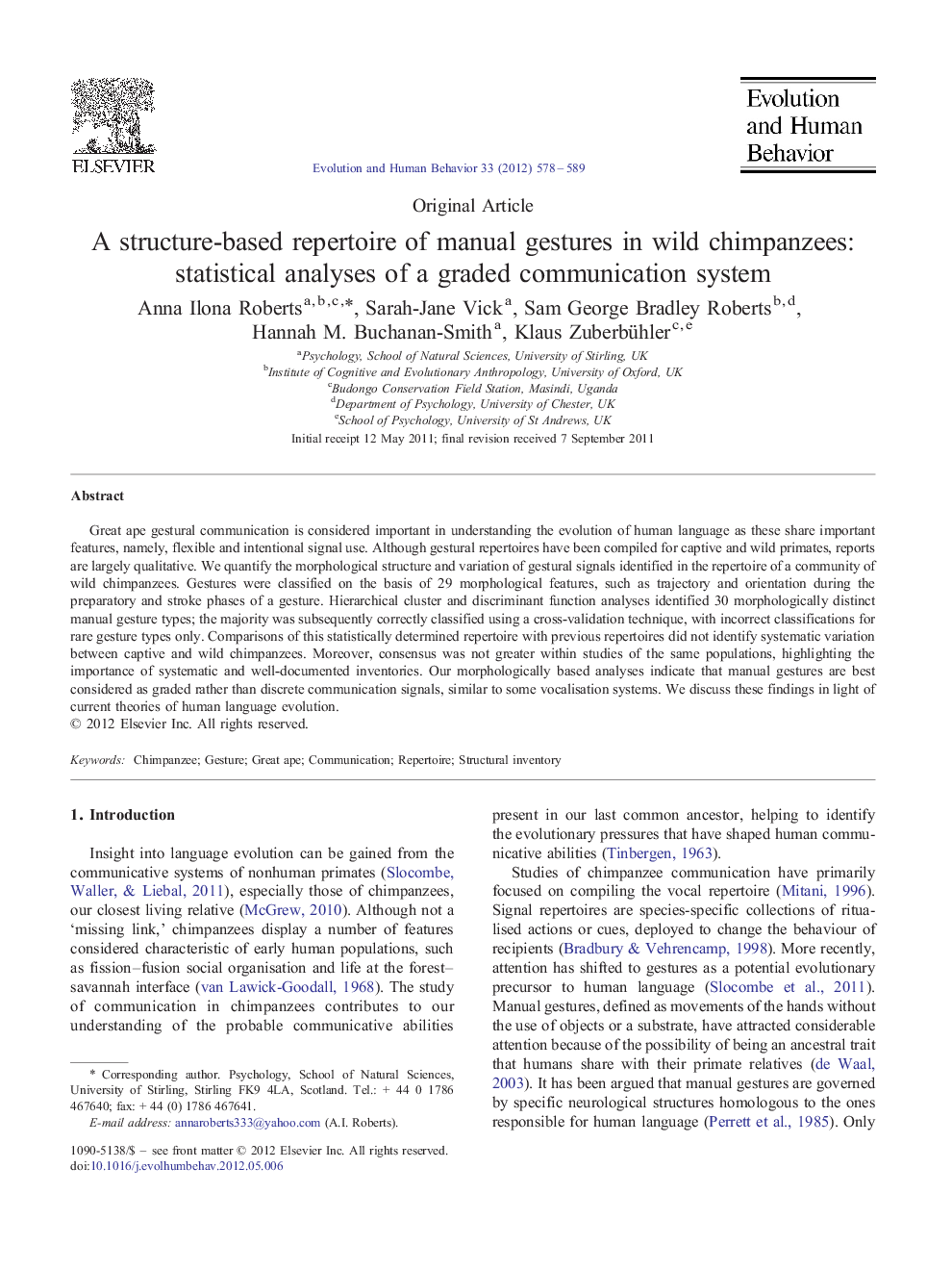| Article ID | Journal | Published Year | Pages | File Type |
|---|---|---|---|---|
| 943216 | Evolution and Human Behavior | 2012 | 12 Pages |
Great ape gestural communication is considered important in understanding the evolution of human language as these share important features, namely, flexible and intentional signal use. Although gestural repertoires have been compiled for captive and wild primates, reports are largely qualitative. We quantify the morphological structure and variation of gestural signals identified in the repertoire of a community of wild chimpanzees. Gestures were classified on the basis of 29 morphological features, such as trajectory and orientation during the preparatory and stroke phases of a gesture. Hierarchical cluster and discriminant function analyses identified 30 morphologically distinct manual gesture types; the majority was subsequently correctly classified using a cross-validation technique, with incorrect classifications for rare gesture types only. Comparisons of this statistically determined repertoire with previous repertoires did not identify systematic variation between captive and wild chimpanzees. Moreover, consensus was not greater within studies of the same populations, highlighting the importance of systematic and well-documented inventories. Our morphologically based analyses indicate that manual gestures are best considered as graded rather than discrete communication signals, similar to some vocalisation systems. We discuss these findings in light of current theories of human language evolution.
